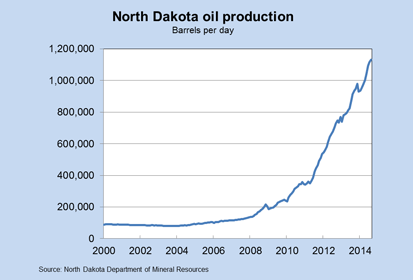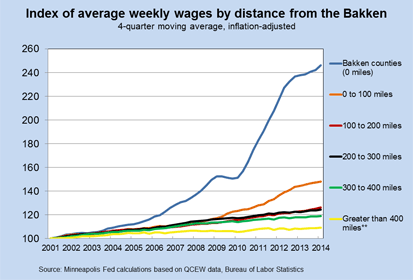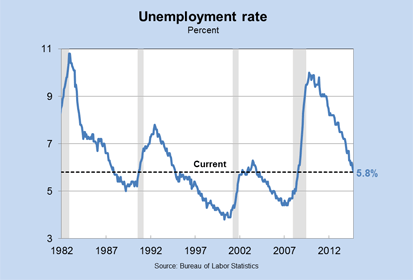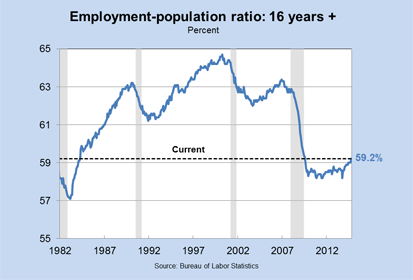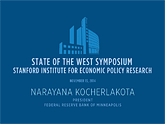Note*
Thank you very much for that introduction, and thank you for the invitation to join you here today. This afternoon, I’ll give you some background about my job as president of the Federal Reserve Bank of Minneapolis. I’ll then talk about two seemingly distinct topics that nonetheless emerge from two related aspects of my job. The first topic is the Bakken oil boom that is under way in western North Dakota and eastern Montana. The second topic is monetary policy—specifically, how the Federal Reserve is doing in terms of achieving its monetary policy goals. At the end of my remarks, I look forward to taking your questions. And please note that my comments today reflect my own views and not necessarily those of my Federal Reserve colleagues.
Federal Reserve System Basics
Let me begin with some basics about the Federal Reserve System. I like to tell people that the Fed is a uniquely American institution. What do I mean by that? Well, relative to its counterparts around the world, the U.S. central bank is highly decentralized. The Federal Reserve Bank of Minneapolis is one of 12 regional Reserve Banks that, along with the Board of Governors in Washington, D.C., make up the Federal Reserve System. Our bank serves as the headquarters for Federal Reserve operations in the ninth of the 12 Federal Reserve districts. The district includes Montana, the Dakotas, Minnesota, northwestern Wisconsin and the Upper Peninsula of Michigan.
Eight times per year, the Federal Open Market Committee—the FOMC—meets to make monetary policy. All 12 presidents of the regional Federal Reserve banks—including me—and the governors of the Federal Reserve Board contribute to these deliberations. However, the Committee itself consists only of the governors, the president of the Federal Reserve Bank of New York and a rotating group of four other presidents. I’m one of those four presidents this year. In this way, the structure of the FOMC mirrors the federalist structure of our government, because representatives from different regions of the country—the various presidents—have input into FOMC deliberations.
This description of the structure of the Federal Reserve is a good motivation for the two topics that I plan to discuss today. At each FOMC meeting, Reserve Bank presidents contribute to the discussion of monetary policy by commenting on economic conditions within their own districts. Hence, Federal Reserve Bank staff economists work hard to track, understand and communicate about their district’s economy. My discussion of my first topic—the Bakken oil boom—builds on exactly that kind of work within my own Reserve Bank.
As I noted earlier, as a Reserve Bank president, I participate in FOMC meetings that formulate monetary policy for the country. That participation is the basis of the second topic that I plan to discuss: the Federal Reserve’s performance relative to its monetary policy goals.
The Bakken Oil Boom: Baseline Facts
With that background in mind, let me turn to my discussion of the Bakken oil boom. The term “the Bakken” refers to a shale oil formation in northwestern North Dakota and northeastern Montana.
As you can see from this map, in the United States, the Bakken oilfield covers a large swath of North Dakota and a corner of Montana. The heart of the Bakken, though, is around the city of Williston, North Dakota. Correspondingly, most of the oil production in the Bakken is taking place in North Dakota.
Now, as it turns out, oil finds are actually not a new phenomenon in North Dakota. Oil deposits were originally discovered in North Dakota in 1951 in what is now known as the Williston Basin. Following the run-up in the price of oil in the 1970s, there was a flurry of drilling in the state during the late 1970s and early 1980s. But that boom disappeared when oil prices collapsed in the mid-1980s. By the mid-2000s, oil production in North Dakota was less than 100,000 barrels per day—that is, less than 2 percent of total U.S. oil production.1,2
Thanks to technological innovation, the situation changed greatly about 10 years ago with the combination of horizontal exploration of shale formations along with hydraulic fracturing, or fracking. This process has revolutionized oil and gas production throughout the country and around the world. In the Bakken region, this technological change means that what was once impenetrable rock is now a mother lode of oil that encompasses nearly 15,000 square miles. Thanks to the Bakken, the state of North Dakota is currently producing over 1 million barrels of oil a day—over 10 times what it produced 10 years ago and over seven times what it produced at the peak of the 1980s boom. North Dakota is now responsible for about an eighth of U.S. total crude oil production and over 1 percent of total world oil production.
This slide shows the rapid increase in daily oil production in North Dakota. These production levels are expected to continue for some time.
This slide depicts the government of North Dakota’s projections for state oil production. These projections include anticipated production from what’s called the Three Forks—another large shale formation located beneath the Bakken.
Impact of the Bakken Boom: Improvements and Challenges
By most usual economic metrics, the oil boom has been associated with a large improvement in the North Dakota economy. If we go back to 2006, per capita real gross state product (GSP) was about 10 percent lower in North Dakota than U.S. per capita real gross domestic product (GDP). Over the next seven years, though, North Dakota per capita real GSP grew rapidly—so much so that by 2013, it was about 40 percent higher than U.S. per capita real GDP.3 The fiscal impact on the state has been even more dramatic. In the 2003-05 biennium, the state of North Dakota collected about $120 million in taxes from oil and gas production. It is projected to top $5 billion in the 2013-15 biennium—which is about $7,000 for every man, woman and child in the state! And this is just the direct tax collections. More generally, the state’s tax revenues have tripled in just six years.4
These are remarkable measures at the statewide level. But, at the same time, in our studies of the Bakken at the Minneapolis Fed, we have been struck by what might be called the “localness” of the Bakken’s impact.5
This localness phenomenon is depicted in terms of wages on this chart. It shows that wages have skyrocketed since 2004 within the Bakken counties. Wages have grown less strongly, but still robustly, in counties that are within 100 miles of the Bakken counties. Once we get outside that 100-mile circle, though, wage growth within a county is essentially unaffected by its distance from the Bakken.
All told, though, in terms of the usual economic metrics, the Bakken boom has been a big positive for the state of North Dakota. Nonetheless, it is important to keep in mind that the boom has also created large challenges for the state. The increased production has meant an influx of people and a spike in strains on existing infrastructure. There are a myriad of ways to see those strains. I will offer just a few anecdotal examples as reported on our website:
- A growth expert we interviewed describes 1 percent to 3 percent population growth as robust. At 4 percent to 5 percent, “things are busting at the seams.” In McKenzie County, that growth rate is 8 percent per year and is expected to grow at that pace for 10 or more years. “How can they possibly keep up?” this official asks.6
Here is a slide that shows recent population gains in Bakken counties versus the state and the nation. And remember that this is an average of all Bakken counties, so some are growing at quite high rates. - Earlier this year, Williston was reported to have the highest rental rates in the country at over $2,000 per month for entry-level, one-bedroom apartments. Rental rates in Dickinson, North Dakota, ranked fourth in the nation.7 In response to the brisk increase in population, communities in western North Dakota have been constructing apartment buildings in areas that had few. For example, in Williston, 49 permits were issued to build apartments during 2013. From 2000 to 2006, no apartment building permits were issued in Williston.8
- Just over one-quarter of the natural gas produced by Bakken oil wells is burned, or flared. This flaring releases carbon dioxide, a greenhouse gas, as a byproduct of combustion. Recent state regulations, though, are expected to spur increases in gas capture and reduce the proportion of wells that flare gas.9
- Water, a key component in fracking, has become an increasingly important issue as industries and communities vie for this key resource. In the city of Williston alone, water upgrades over the next six years are projected to cost $250 million. In total, new infrastructure will cost the city $625 million over that time.10
- Smaller towns are especially feeling the infrastructure squeeze. The city of Arnegard has a resident population just over 100, but it has a service population of 1,600. “They don’t have public water; their sewer system is overrun and outdated. They were less than underprepared,” said one state official.11
These are certainly difficult problems—but I do have confidence in the ability of North Dakotans to solve them. One source of my confidence is the 40-fold increase in tax revenues from oil and gas production that the state has experienced. Those revenues represent resources that can go a long way toward ameliorating the infrastructure strains that I’ve mentioned.
Let me close my discussion of the Bakken boom by discussing what I see as the biggest opportunity and challenge that the boom creates—namely, the long-term development issues. Over the next 20 years, the world economy will continue to evolve technologically. Of course, we do not know exactly what course that evolution will take. But I suspect that, as has been true over the past two centuries, the evolution of technology will continue to favor the better-educated and especially those who have acquired skills associated with science, technology, engineering and mathematics. How will the residents of the Bakken and North Dakota choose to engage with this process of global technological change over the next two to three decades? The windfall of the Bakken oil boom gives them the ability to answer this question in exciting ways that would have seemed impossible a decade ago.
Monetary Policy
Let met turn now to my second topic, monetary policy. I will describe the goals that the FMOC seeks to achieve through its monetary policy choices. I will discuss how the Committee has done in terms of achieving those goals over the past seven years, since the onset of the Great Recession in late 2007. I’ll close by talking about my outlook for the evolution of inflation and how that outlook affects my thinking about current monetary policy choices.
Goals of Monetary Policy
The natural starting point for our discussion of monetary policy goals is the Federal Reserve Act, the law in which Congress created the Fed and defined its purposes. Through the Federal Reserve Act, Congress requires the Federal Reserve to make monetary policy so as to promote effectively the goals of maximum employment, stable prices and moderate long-term interest rates. Most economists believe that if the Fed achieved the first two mandates (maximum employment and stable prices), it would automatically achieve the third (moderate long-term interest rates). Hence, monetary policymakers in the United States are usually described as having a dual mandate: to promote price stability and maximum employment.
Congress’ short, overarching description of Federal Reserve objectives is the foundation for current monetary policymaking, but it does not address many specifics. In January 2012, in a key milestone in the evolution of the Fed’s communications, the FOMC adopted a longer and more precise description of its long-run goals. I’ll call the associated short but pathbreaking document the “framework statement.” It contains a number of important ideas—and indeed I encourage all Americans to read the entire statement—but I’ll stress two main elements. The first element is that the framework statement explicitly translates the words “price stability” into a longer-run goal of a 2 percent annual inflation rate. Here, the term “inflation rate” refers specifically to the personal consumption expenditures (or PCE) inflation rate. This is a measure of the rate of increase in the prices of all goods and services, including those related to food and energy. The adoption of this explicit 2 percent target means that the American public need guess no longer about the Federal Reserve’s inflation intentions, either on the upside or on the downside: 2 percent is our goal.
Second, the framework statement describes how the Committee weighs the two mandates—promoting maximum employment and promoting price stability—against one another. Importantly, it stresses that, from the point of view of monetary policy, the two mandates are typically complementary. As I noted earlier, monetary policy pushes employment and inflation in the same direction. But, as it turns out, most shocks that push employment down also tend to push inflation down over the medium run, and vice versa. The Bakken is a great, albeit local, example: The fracking boom has driven up both employment and prices—most notably, shelter prices—in that area. Hence, monetary stimulus designed to help the FOMC achieve its employment goals will typically help the FOMC achieve its inflation goals, and vice versa.
Mandate Performance since 2007
I now turn to the FOMC’s performance with respect to its employment and price stability mandates over the past few years. As it turns out, this performance provides a clear example of the complementarity of the FOMC’s two mandates that I just mentioned.
In terms of the employment mandate, labor market outcomes, while improving, have been distressingly weak since 2007. We can see this weak performance in a number of ways, but I’ll use two particular metrics: the unemployment rate and the employment-population ratio. The unemployment rate rose rapidly beginning in 2007, peaked at 10 percent in late 2009 and has fallen only gradually to its current level of 5.8 percent.
The second graph depicts the fraction of people over the age of 16 who have a job. That fraction fell sharply beginning in 2007 and has since risen only slightly.
To be clear, some of this slow recovery in employment can be attributed to a key demographic force: an increasing fraction of the people aged 16 and over reach retirement age every year. But the recovery in employment is a highly subdued one, even if we strip out this demographic effect by focusing only on those people aged 25 to 54.
So, employment has been below its maximum level over the past seven years. What about inflation? The following graph shows that PCE inflation has averaged 1.5 percent since the beginning of the Great Recession in 2007. So, inflation has also been low relative to the FOMC’s target. And there is little sign of an uptick—over the past 12 months, inflation has been 1.4 percent.
Thus, the macroeconomic shock of 2007—the Great Recession—pushed both employment and inflation below the FOMC’s goals. In this sense, the two mandates have been entirely complementary over the past seven years. Unfortunately, monetary policy has proven to be insufficiently accommodative to offset either the price or employment effects of this large shock.
My Inflation Outlook and Its Implications for Policy
As you can see from the graph before you, inflation has been low for a long time. Inflation tends to be highly persistent, and so this long stay below target suggests that it will take some time for inflation to get back to 2 percent. Indeed, my benchmark outlook is that PCE inflation will not rise back to 2 percent until 2018. Similarly, the minutes from the September FOMC meeting note that Board of Governors staff currently project that inflation will remain below 2 percent over the next few years.
This inflation outlook has important implications for my outlook for the appropriate evolution of monetary policy. Many observers have suggested that the FOMC should begin to tighten credit conditions by raising its target range for the fed funds rate at some point in 2015. Given the lags associated with monetary policy, such a move would lower anticipated inflation over the following one to two years—that is, serve to push inflation down and further away from the FOMC’s goal of 2 percent. So, under my current outlook, it will be inappropriate for the FOMC to raise interest rates during 2015.
Let me make a couple of comments about this conclusion. First, I’ve made no reference to the falling unemployment rate. I don’t see a falling unemployment rate as a reason to tighten policy unless that fall is generating unduly high inflationary pressures. The essence of my inflation outlook is that, despite recent and anticipated falls in the unemployment rate, I don’t see such pressures at this time.
Second, my conclusion is, of course, dependent on the data. My inflation outlook could rise. If so, my preferred date of interest rate “lift-off” would come forward in time—possibly into next year.
Conclusions
Let me wrap up. I’ve discussed two disparate topics, the Bakken oil boom and appropriate monetary policy. I say these topics are disparate—but I nonetheless see them as connected. Of course, I don’t form my views about appropriate monetary policy based on conditions in the Bakken. But the Bakken is a great example of what a booming economy looks like—an economy that is actually pushing the limits of available resources, not an economy that is operating well within the limits of available resources. It is an example that I have found highly instructive as I continue to think about the degree of economic slack left at the national level.
Thank you for your attention. I look forward to taking your questions.
Note
*Thanks to David Fettig, Terry Fitzgerald, Rob Grunewald and Sam Schulhofer-Wohl for their assistance with these remarks.
Endnotes
1 World and U.S. oil production data: U.S. Energy Information Administration.
2 North Dakota oil production data: North Dakota Industrial Commission, Department of Mineral Resources, Oil and Gas Division.
4 Ronald A. Wirtz. Congratulations on your oil boom...now the real work begins. fedgazette. Federal Reserve Bank of Minneapolis. July 22, 2013.
5 Rob Grunewald and Dulguun Batbold. Bakken activity: How wide is the ripple effect? fedgazette. Federal Reserve Bank of Minneapolis. May 7, 2013.
6 Ronald A. Wirtz. Congratulations on your oil boom...now the real work begins. fedgazette. Federal Reserve Bank of Minneapolis. July 22, 2013.
7 North Dakota oil boomtown has nation’s highest rent. CommunityDividend. Federal Reserve Bank of Minneapolis. April 1, 2014.
8 The Bakken Oil Boom. Federal Reserve Bank of Minneapolis.
9 Rob Grunewald and Dulguun Batbold. Bakken energy production continues to boom, but growth is easing. fedgazette. Federal Reserve Bank of Minneapolis. June 13, 2014.
10 Ronald A. Wirtz. Congratulations on your oil boom...now the real work begins. fedgazette. Federal Reserve Bank of Minneapolis. July 22, 2013.
11 Ronald A. Wirtz. Congratulations on your oil boom...now the real work begins. fedgazette. Federal Reserve Bank of Minneapolis. July 22, 2013.




